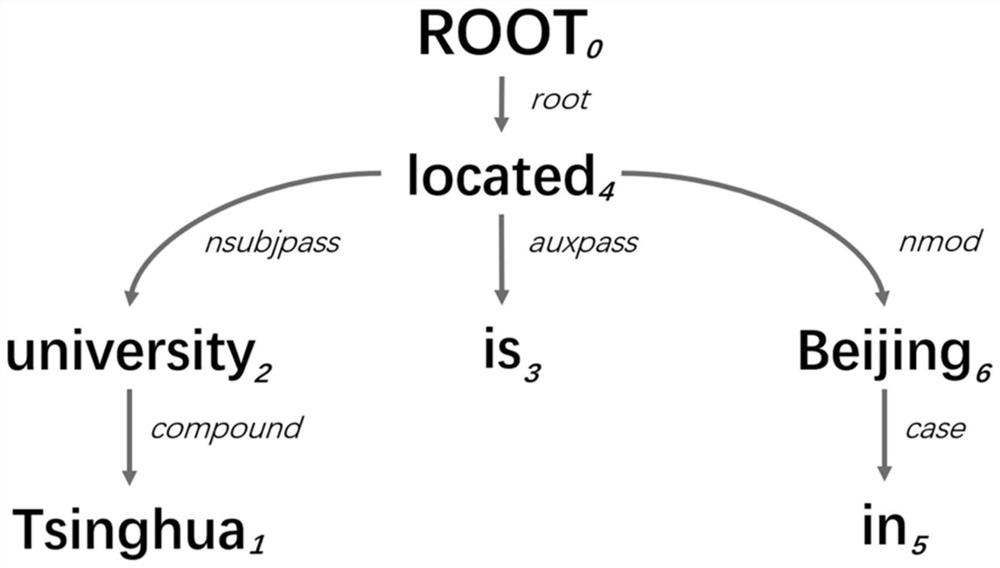Syntax dependency relationship-based named entity identification method
A named entity recognition and dependency relationship technology, applied in the field of deep learning, can solve problems such as low accuracy rate, incorrect boundary judgment, boundary recognition is more difficult than type recognition, etc.
- Summary
- Abstract
- Description
- Claims
- Application Information
AI Technical Summary
Problems solved by technology
Method used
Image
Examples
Embodiment 1
[0043] Such as figure 1 As shown, Embodiment 1 provides a named entity recognition method based on syntactic dependencies, including the following steps:
[0044] Step S1, in the model training phase, first use the pre-trained Word2vec to map the one-hot word vector to the defined low-dimensional space, and obtain the word vector of each word;
[0045] Step S2, use bidirectional long-short-term memory network (Bi-LSTM) to encode the word vector of each time step in the sentence forward and backward respectively, and concatenate to obtain global features with context information;
[0046] Step S3, using syntax analysis technology to obtain the syntax dependency tree of each sentence, and calculating the shortest dependency path between two words on the tree;
[0047] Step S4, obtain the top-down and bottom-up feature sequences of each word according to the shortest dependency path and input them into the LSTM network, and calculate the local features of the word;
[0048] Ste...
PUM
 Login to View More
Login to View More Abstract
Description
Claims
Application Information
 Login to View More
Login to View More - Generate Ideas
- Intellectual Property
- Life Sciences
- Materials
- Tech Scout
- Unparalleled Data Quality
- Higher Quality Content
- 60% Fewer Hallucinations
Browse by: Latest US Patents, China's latest patents, Technical Efficacy Thesaurus, Application Domain, Technology Topic, Popular Technical Reports.
© 2025 PatSnap. All rights reserved.Legal|Privacy policy|Modern Slavery Act Transparency Statement|Sitemap|About US| Contact US: help@patsnap.com



